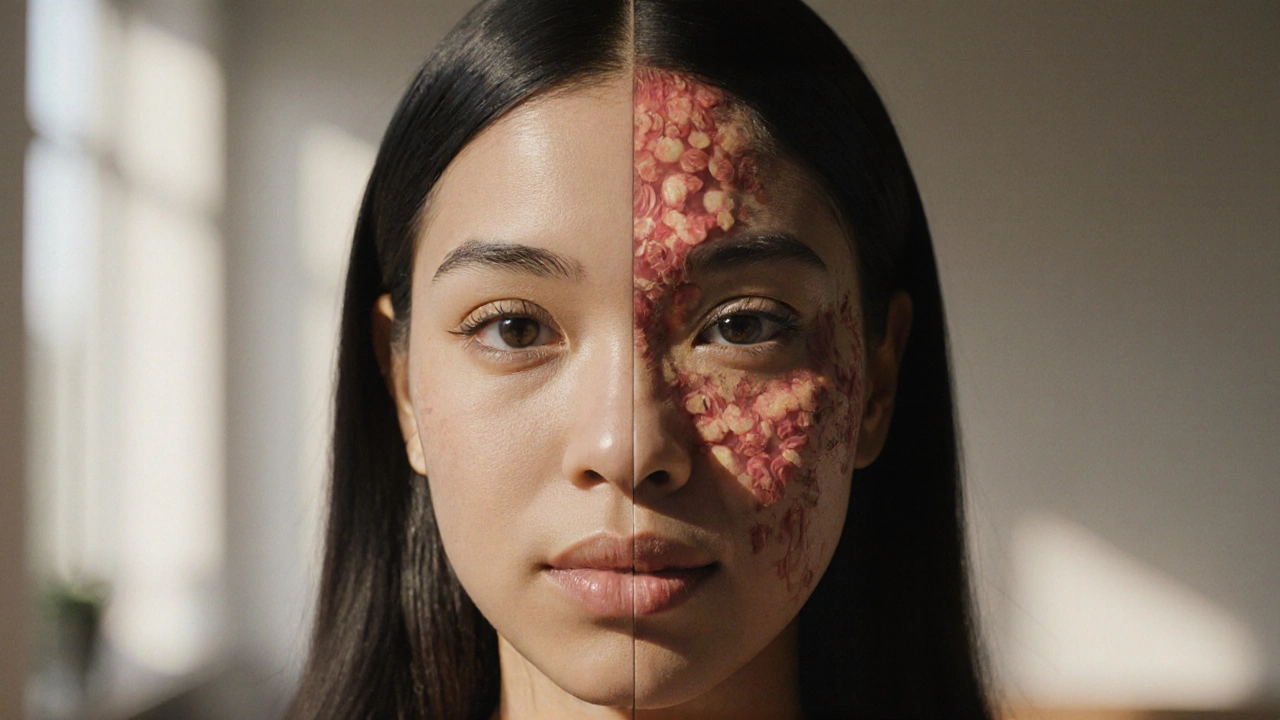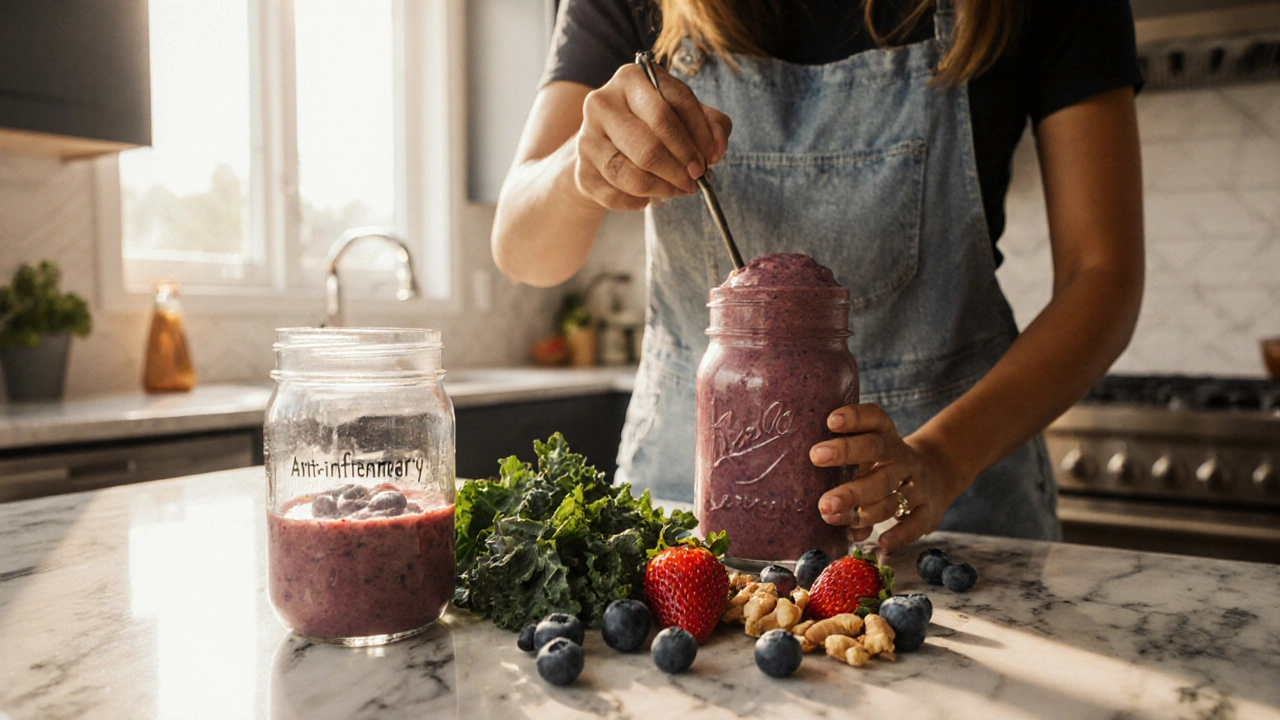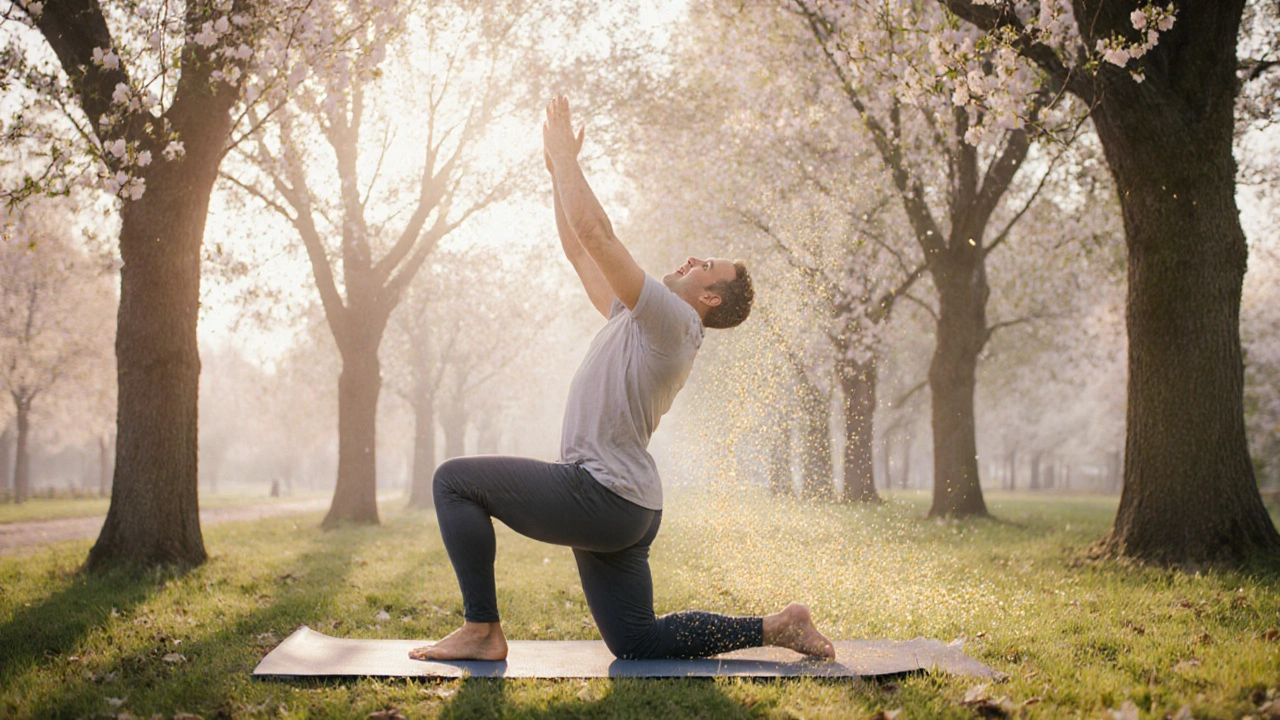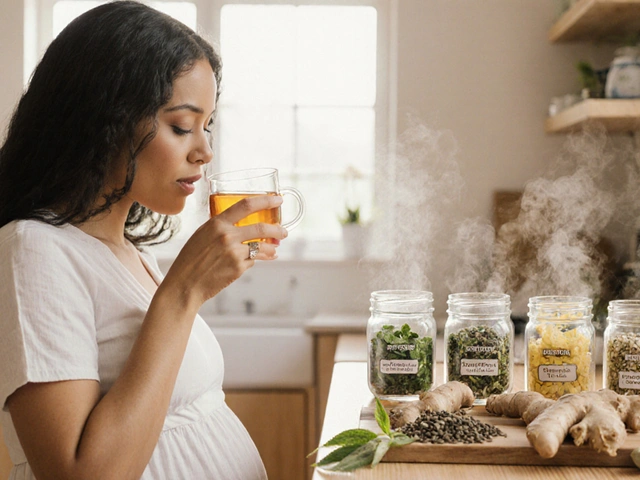Skin Inflammation & Aging: Essential Facts & Tips

Skin Inflammation & Aging Risk Assessment
Assess how your daily habits affect skin inflammation and aging. Answer the questions below to receive tailored advice.
How Often Do You Apply Sunscreen Daily?
How Often Do You Eat Anti-inflammatory Foods (like berries, leafy greens)?
How Often Do You Experience Stress?
How Often Do You Use Harsh Skincare Products?
How Many Hours of Sleep Do You Get Per Night?
When we talk about Skin Inflammation is the body's immune response that shows up as redness, swelling, itching or pain on the skin, we often think of a temporary rash that will fade. But what many don’t realize is how that flare‑up can speed up the skin’s natural wear‑and‑tear. In this guide we’ll unpack the chemistry, highlight everyday triggers, and give you practical ways to keep your skin looking fresh longer.
Key Takeaways
- Chronic inflammation harms collagen and elastin, the fibers that keep skin firm.
- UV radiation, pollution, sugary diets, and stress are the top culprits that link inflammation to visible aging.
- Anti‑inflammatory foods, sunscreen, and a gentle skincare routine can slow down the aging clock.
- Persistent redness, scaling, or pain should prompt a visit to a dermatologist.
- Regular skin‑health checks help catch early signs of inflammatory skin conditions.
What Exactly Is Skin Inflammation?
At its core, inflammation is a signaling cascade. When skin cells detect a threat-be it a micro‑be, a pollutant particle, or an ultraviolet photon-they release Cytokines such as interleukin‑1 and tumor‑necrosis factor‑α. These messengers widen blood vessels, bring immune cells to the surface, and create the classic red, warm, swollen look we associate with a rash.
While an acute flare is useful for defending against infection, chronic low‑grade inflammation (sometimes called “inflammaging”) stays under the radar, slowly eroding the skin’s structural proteins.
How Inflammation Accelerates Aging
The skin’s youthful bounce owes a lot to Collagen and a protein that provides tensile strength and Elastin that allows it to snap back after stretching. Persistent inflammation releases enzymes called matrix metalloproteinases (MMPs) that chew up these fibers, leading to fine lines, laxity, and loss of firmness.
At the same time, oxidative stress-free radicals generated by UV light or smoking-adds another layer of damage. The combined onslaught reduces the skin’s ability to retain moisture, making it appear dull and rough.
Top Triggers That Tie Inflammation to Aging
- UV Radiation: Sun exposure spikes inflammatory cytokines and accelerates MMP activity, directly breaking down collagen.
- Air Pollution: Particulate matter settles on the skin, triggering oxidative inflammation and pigment irregularities.
- High‑Sugar Diets: Excess glucose fuels advanced glycation end‑products (AGEs) that stiffen collagen fibers.
- Stress & Poor Sleep: Cortisol spikes increase cytokine production, keeping the skin in a semi‑inflamed state.
- Harsh Skincare Products: Fragrances, alcohol, and sulfates strip the skin barrier, causing irritation and chronic redness.
Recognizing these triggers is the first step toward a calmer, younger‑looking complexion.

Practical Ways to Reduce Inflammation and Preserve Youth
Below is a quick‑reference checklist you can paste on your fridge.
- Apply broad‑spectrum SPF 30+ every morning, reapplying every 2hours outdoors.
- Eat a rainbow of fruits and vegetables rich in Antioxidants such as vitaminC, vitaminE, and polyphenols.
- Swap refined carbs for whole grains and legumes to keep blood sugar steady.
- Hydrate with water and skin‑friendly oils like jojoba that mimic natural Sebum - the skin’s own moisturizing film.
- Choose fragrance‑free, pH‑balanced cleansers; avoid scrubbing harder than a soft washcloth.
- Incorporate calming actives: niacinamide, aloe vera, and colloidal oatmeal can soothe inflamed patches.
- Prioritize 7‑9 hours of sleep and practice stress‑relief techniques (deep breathing, short walks).
These habits don’t just calm a breakout; they protect collagen, keep elastin flexible, and reduce the visual signs of aging.
When to Seek Professional Help
If you notice any of the following, a dermatologist’s evaluation is wise:
- Redness that lasts more than two weeks despite home care.
- Persistent itching, burning, or pain.
- Blisters, oozing, or crusting that spreads.
- Uneven pigment changes that affect self‑confidence.
- Sudden loss of skin elasticity or deepening of fine lines.
Early intervention can prevent chronic inflammation from locking in permanent damage.
Comparison of Common Inflammatory Skin Conditions and Their Aging Impact
| Condition | Typical Inflammatory Trigger | Effect on Collagen | Effect on Pigmentation | Long‑Term Aging Sign |
|---|---|---|---|---|
| Acne | Hormonal excess, bacteria | Local breakdown, can lead to scarring | Post‑inflammatory hyperpigmentation | Visible pits and darker spots |
| Rosacea | Heat, alcohol, spicy food | Gradual loss of dermal matrix | Persistent redness, telangiectasia | Thickened skin, visible pores |
| Eczema (Atopic Dermatitis) | Allergens, dry environment | Reduced collagen synthesis | Frequent hyper‑ and hypopigmentation | Rough texture, fine lines |
| Psoriasis | Genetic factors, stress | Rapid turnover, thickened plaques | Often lighter than surrounding skin | Plaque scarring, loss of elasticity |
| Contact Dermatitis | Chemicals, fragrances | Temporary collagen disruption | Possible hyperpigmentation after healing | Localized dark spots, texture changes |
Quick Checklist for Everyday Skin‑Inflammation Management
- ☑ Use SPF daily - even on cloudy days.
- ☑ Choose antioxidant‑rich foods (berries, leafy greens).
- ☑ Keep skin barrier healthy with gentle moisturizers.
- ☑ Stay hydrated - aim for 2L of water.
- ☑ Limit alcohol, processed sugars, and tobacco.
- ☑ Get regular sleep and manage stress.
Follow this list consistently, and you’ll notice fewer flare‑ups and a smoother, more resilient complexion.
Final Thought
Understanding that skin inflammation and aging are two sides of the same biological coin empowers you to act early. By tackling the root causes-UV, diet, stress, and harsh products-you protect the collagen and elastin scaffolding that keep your skin firm and vibrant. If inflammation persists, professional guidance ensures you stay on track toward healthier, younger‑looking skin.

Frequently Asked Questions
Can occasional redness cause premature aging?
A brief red flush from exercise or heat usually resolves without lasting damage. It’s the chronic, repeated inflammation that degrades collagen and speeds up visible aging.
Is sunscreen enough to stop inflammation caused by sun exposure?
Sunscreen blocks the majority of UV‑B rays that trigger inflammation, but broad‑spectrum formulas also shield against UVA‑induced oxidative stress. Reapply often and pair sunscreen with protective clothing for best results.
Do anti‑inflammatory supplements help skin aging?
Supplements like omega‑3 fatty acids, curcumin, and vitaminD have shown promise in lowering systemic inflammation, which can translate to calmer skin. They work best when combined with a balanced diet and lifestyle.
How often should I see a dermatologist for inflammatory skin issues?
If you have a new or worsening rash that lasts over two weeks, schedule an appointment. For chronic conditions like eczema or rosacea, a yearly check‑up helps adjust treatment and monitor any aging‑related changes.
Can stress‑relief techniques improve skin appearance?
Yes. Lowering cortisol through meditation, yoga, or regular exercise reduces cytokine spikes, which can calm inflammation and support collagen maintenance, leading to a healthier skin tone.






Tyler Heafner
September 29, 2025 AT 22:30Chronic inflammation functions as a catalyst for dermal degradation, accelerating the breakdown of collagen and elastin fibers. When inflammatory pathways remain active, matrix metalloproteinases are up‑regulated, leading to measurable loss of skin tensile strength. Clinical studies consistently demonstrate that individuals with persistent low‑grade inflammation exhibit more pronounced fine lines and reduced elasticity. Therefore, integrating anti‑inflammatory strategies into daily skincare regimens is not merely cosmetic but medically prudent. Consistent use of broad‑spectrum sunscreen and a diet rich in antioxidants constitute the cornerstone of any evidence‑based protocol.
Maryanne robinson
October 4, 2025 AT 15:57Let’s dig deep into why each of those lifestyle choices you see on the checklist actually matter for your skin’s long‑term vitality. First, sunscreen isn’t just a summer‑only product; UV‑A rays penetrate clouds and glass, inciting cytokine release that fuels chronic inflammation even on a rainy day. Second, antioxidants such as vitamin C, polyphenols, and carotenoids neutralize free radicals before they can trigger MMP enzymes that chew up collagen fibers. Third, the gut‑skin axis plays a surprisingly powerful role-high‑fiber, low‑glycemic foods keep insulin spikes low, reducing advanced glycation end‑product formation that stiffens collagen.
When you pair these dietary habits with stress‑reduction techniques like deliberate breathing or short walks, cortisol levels drop, which in turn diminishes the production of interleukin‑1 and tumor necrosis factor‑α. The result is a calmer immune environment where skin can focus on repair rather than perpetual defense.
Sleep, often undervalued, is when the skin’s reparative processes peak; during deep REM phases, growth hormone surges, stimulating fibroblast activity and new collagen synthesis. If sleep is consistently under 7 hours, those processes are truncated, leaving you with a slower turnover rate and visible dullness.
Finally, consider the barrier function: harsh surfactants strip lipids, prompting keratinocyte stress and a cascade of inflammatory mediators. Switching to pH‑balanced, fragrance‑free cleansers helps preserve that lipid mantle, allowing the skin’s natural moisturizing factor to operate efficiently.
In practice, think of your skin as a garden: you provide sunscreen as shade, antioxidants as nutrient‑rich soil, sleep as nightly watering, stress management as weed control, and gentle products as the right tools to tend the beds. The more consistently you apply each element, the more robust the garden becomes, and the slower the inevitable signs of aging appear. Keep tracking your habits, adjust where needed, and you’ll likely notice fewer flare‑ups, tighter texture, and that coveted healthy glow that comes from inside out.
Erika Ponce
October 9, 2025 AT 09:24Drink more water, your skin will thank you.
Danny de Zayas
October 14, 2025 AT 02:52Yeah, staying hydrated is a simple win – it helps keep the moisture barrier plump and can reduce that tight, dry feeling you get after a long day in the sun or a heated room. I’ve found that adding a splash of cucumber or a few mint leaves to my water makes it more fun and reminds me to sip throughout the afternoon.
John Vallee
October 18, 2025 AT 20:19When we speak of the skin’s resilience, we must acknowledge the symphony of cellular actors that maintain its structural integrity. Collagen, elastin, and hyaluronic acid each perform a distinct yet interdependent role, much like instruments in an orchestra. If one section falls out of tune-say, through persistent oxidative stress-the entire performance suffers, manifesting as sagging, fine lines, or loss of radiance.
What you are really dealing with is a cascade: UV exposure generates reactive oxygen species, which then activate transcription factors such as NF‑κB. This, in turn, up‑regulates pro‑inflammatory cytokines, which recruit matrix metalloproteinases that degrade the extracellular matrix. The net effect is a skin surface that appears older, less supple, and more prone to damage.
Now, the good news is that this cascade is not immutable. By introducing antioxidants-both topically (vitamin C serums, green tea extracts) and systemically (berries, leafy greens)-you scavenge free radicals before they can trigger those harmful pathways. Moreover, consistent application of a broad‑spectrum sunscreen with at least SPF 30 creates a physical barrier that blocks the bulk of UV‑B photons and significantly reduces UVA‑induced photo‑oxidation.
Equally important is the barrier function. Harsh surfactants strip away lipids, compromising the stratum corneum’s ability to retain water. Opt for cleansers that respect the skin’s natural pH, and follow with moisturizers that contain ceramides and niacinamide to reinforce barrier repair.
Sleep, stress management, and even gut health complete the trifecta of preventative measures. During deep sleep, the body releases growth hormone, stimulating fibroblast activity and collagen synthesis. Chronic stress elevates cortisol, which can suppress that same process. Finally, a diet low in refined sugars and rich in omega‑3 fatty acids helps keep systemic inflammation in check, thereby protecting the skin from within.
In summary, think of your skincare routine as a multi‑layered defense system: block the aggressors, supply the nutrients, and support the repair crew. When you align these strategies, you give your skin the best chance to maintain its youthful elasticity and luminous appearance for years to come.
Brian Davis
October 23, 2025 AT 13:46From a cultural standpoint, many traditional societies have long recognized the importance of sun protection and herbal antioxidants. For instance, Ayurvedic practitioners recommend neem oil and turmeric paste for their anti‑inflammatory properties, while Japanese skin‑care rituals emphasize double cleansing and the use of rice bran oil, which is rich in vitamin E. Integrating these time‑tested ingredients with modern sunscreen formulations can create a hybrid approach that honors heritage while leveraging scientific advancements. Moreover, dietary staples such as fermented foods (kimchi, miso) support gut health, indirectly influencing skin inflammation through the gut‑skin axis. By embracing both ancient wisdom and contemporary research, we can craft a more holistic strategy against skin‑aging inflammation.
jenni williams
October 28, 2025 AT 07:14Honestly, I used to think a little redness was just part of getting older, but after I started tracking my sleep and adding more berries to my breakfast, the difference is pretty clear. My skin feels smoother and the occasional flare-ups have become way less frequent.
Kevin Galligan
November 2, 2025 AT 00:41Wow, so you’re telling me my midnight snacks are actually sabotaging my face? Guess I’ll swap chips for kale chips and see if the mirror agrees 😏.
Dileep Jha
November 6, 2025 AT 18:08From a systems‑biology perspective, the integumentary apparatus operates as a complex adaptive network, where perturbations in one node-such as UV‑induced cyclobutane pyrimidine dimers-propagate through signaling cascades affecting downstream effectors like MMP‑1 and TIMP‑1. When you overlay metabolic stressors, namely hyperglycemia-driven AGE formation, you observe a synergistic amplification of inflammatory mediators, culminating in phenotypic senescence markers. Hence, a reductionist approach that isolates single variables (e.g., “just wear sunscreen”) fails to capture the emergent behavior of the skin ecosystem. A holistic regimen, integrating photoprotection, nutraceuticals, and circadian alignment, is requisite for mitigating the multi‑factorial trajectory of inflamm‑aging.
Michael Dennis
November 11, 2025 AT 11:35While the previous point is technically accurate, the practical implication remains that consistent sunscreen application is the most straightforward and evidence‑based intervention.
chris mattox
November 16, 2025 AT 05:03Picture your skin as a vibrant tapestry woven from threads of collagen, pigments of melanin, and the shimmering dew of hydration. When the loom of life pulls too hard-excessive sun, stress, sugar-it frays those threads, and the tapestry dulls. By sprinkling antioxidant‑rich berries, draping SPF like a protective veil, and letting the night’s gentle hush restore the fibers, you keep the masterpiece radiant. Embrace the rainbow on your plate, the soothing caress of a gentle cleanser, and the rhythmic lull of restful sleep, and watch your skin’s story unfold in colors of health and vitality.
Jackson Whicker
November 20, 2025 AT 22:30Ah, the lofty metaphor of skin as a tapestry-how delightfully pretentious, yet not without kernel of truth. Let us venture beyond the poetic veneer and confront the stark reality: our epidermal fortress is under siege by a relentless barrage of photonic, metabolic, and psychosomatic assaults. The true artisan of youthful dermis is not merely a poet’s imagination but the diligent alchemist who blends broad‑spectrum photoprotection, phytonutrient fortification, and circadian fidelity into a regimen of disciplined devotion.
Consider, for a moment, the inexorable rise of matrix metalloproteinases when UV‑A photons hijack the MAPK pathway-this is not a lyrical flourish but a biochemical cascade that dismantles the very scaffolding of firmness. Likewise, the insidious formation of advanced glycation end‑products, birthed from dietary excesses, cross‑links collagen fibers, rendering them brittle-an outcome no amount of poetic reverie can reverse without concrete dietary overhaul.
Therefore, to honor the tapestry metaphor, we must stitch each thread with intention: apply SPF like an armor plating, ingest anthocyanin‑laden fruits as the warp, and grant nocturnal restoration through deep, uninterrupted slumber as the weft. Only then will the tableau of our skin resist the inexorable march toward dystrophic sagging and mottled discoloration.